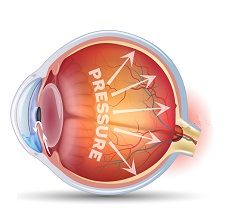Article
Study Disputes Anti-VEGF Injection Link to Long-Term Intraocular Pressure Increase
Author(s):
During follow-up periods ranging from six months to 10 years, no increase in IOP over time was found in AMD or DME patients who received intravitreal injection of an anti-VEGF agent, no matter how many injections they received.

The impact of intravitreal anti-vascular endothelial growth factor (VEGF) injections on intraocular pressure (IOP) has been a matter of debate among ophthalmologists for years. Several reports of a short-term increase in IOP after anti-VEGF injections in patients with age-related macular degeneration (AMD) have been made.
However, in each of these reports, although IOP increased substantially 30 minutes after injection, it returned to its baseline level by the first follow-up visit. In most patients, the increase in IOP normalizes after 30 minutes, although normalization of IOP may take longer in glaucomatous eyes. Therefore, some have attributed this increase in IOP to an increase in ocular volume immediately after injection.
Nevertheless, reports of sustained long-term elevations in IOP after intravitreal injection have been made for several anti-VEGF agents used for a variety of diagnoses. Total number of injections, the interval between them, and history of glaucoma or ocular hypertension have all been proposed as risk factors.
Although large clinical trials have shown that intravitreal injections do not result in a sustained increase in IOP, most retinal specialists believe that such injections can cause a sustained increase in IOP. So Ashiyana Nariani, Blake Williams, and Seenu Hariprasa, of the Department of Ophthalmology and Visual Science at the University of Chicago Pritzker School of Medicine, did a retrospective chart review study to investigate the long-term effects of multiple intravitreal injections of anti-VEGF agents in patients with AMD or diabetic macular edema (DME).
The team selected for review the records of patients >40 years old who were treated before May 1, 2013, but excluded patients with retinal vein occlusion because it poses a high risk for the development of glaucoma. This process resulted in a group of 76 eyes with AMD and 55 eyes with DME.
The study also included a control group of 72 patients who received injection(s) of anti-VEGF agents in only one eye. This group enabled the team to compare the IOP of the treated eye with that of the control eye in each patient.
The team grouped patients by indication as well as by number of injections (in sets of three or as ≥10). For each group, they compared mean IOP after treatment with mean IOP at baseline. Length of follow-up ranged from six months to 10 years. No agents to prevent an increase in IOP were given before or after intravitreal injection.
They found that, for either treated indication, none of the differences between mean IOP before and after injection(s) were statistically significant for any number of injections. Moreover, in patients injected in only one eye, they found no statistically significant increase in IOP in the injected eye compared with that in the noninjected eye.
These results led the researchers to conclude that no increase in IOP over time occurred in AMD or DME patients who received intravitreal injection(s) of anti-VEGF agents no matter how many injections they received.
According to the team, “Our data suggest that a treat-and-extend dosing regimen for anti-VEGF intravitreal injections is not a significant risk factor for an increase in IOP.… and routine evaluation specifically for IOP elevation may not be necessary.”
The study, “Long-term effect of anti-vascular endothelial growth factor injections on intraocular pressure,” was published in the September 2016, issue of the Indian Journal of Ophthalmology.
Related Coverage:
Studies Conflict on Ranibizumab’s Stroke Risk
AMD Combination Therapy Disappoints in Phase 3
Diabetic Macular Edema Study: Ozurdex Outperformed Avastin, but Not Without Drawbacks





